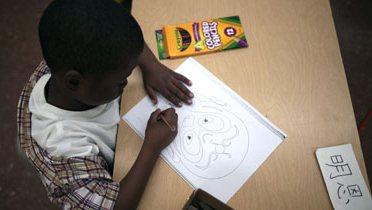Unhealthy children grow up to be unhealthy adults, poor health and low income go hand in hand, and both poverty and poor health make large demands on public coffers. Thus promoting children’s health is essential for improving the population’s health; policies to prevent children’s health problems can be wise investments; and policy makers should implement carefully designed policies and programs to promote child health.
U.S. child health policy is a patchwork of efforts at the federal, state, and local levels. Many of them aim specifically to improve child health, while others have different goals but could indirectly affect the health of children. Some health-related policies target children directly, attempting to treat health problems once they occur or to prevent them from occurring, while others target women during or before pregnancy with the goal of improving the health of newborns. Some policies target low-income children, while others are more universal. We commissioned a group of experts to review research on how effectively U.S. policies promote child health. The articles, based on the strongest evidence to date, assess how best to promote child health and, more specifically, what interventions and strategies work best at various stages of children’s development. Here’s an overview of what we found, along with the implications for public policy:
A wide range of policies affect children’s health
We can’t think only about health care when considering policies to promote child health. Many other types of policy matter as well. A century ago, infectious diseases posed the primary threat to children’s health. As that threat has diminished, others have come to the fore. Many of the most important threats to children’s health today have to do with the social and physical environment, broadly defined. For example, injury is now the leading cause of death among children over one year old. Policies to prevent injury range from housing and traffic ordinances to family interventions to prevent child abuse. Suicide has become a major cause of death among adolescents. Policies that focus on children’s mental health range from behavioral interventions in schools to rehabilitative mental health treatment in the juvenile justice system. Whether we are thinking of infectious disease or any other threats to child health, parents’ education and income are among the most important protective factors. Thus, a wide range of antipoverty and other programs may also improve children’s health and help them reach their full potential.
Responsibility for child health is fragmented
A serious obstacle to improving U.S. children’s health is the fragmentation of responsibility between families and multiple layers of government. America presents a unique tension between the idea that child health is primarily a family responsibility and the view that government has a responsibility to ensure the health of its most vulnerable citizens. In the United States, unlike in other developed countries, the government has no affirmative obligation to promote child health and, more often than not, steps in only after a severe health risk has been identified. Moreover, responsibility is fragmented at the federal, state, and local levels, and among entities that control 2 different aspects of children’s welfare, such as health care, education, and juvenile justice. The result is a largely uncoordinated jumble of resources and services that can be extremely difficult to navigate and within which children who live in different places or situations have very different access to resources.
We approach child health with a crisis response mentality
Parents’ rights to raise their children as they see fit, along with the U.S. government’s limited responsibility for promoting children’s health and the fragmentation of services, have led by default to a system that responds to crises rather than marshaling resources to promote child health. Many children’s health conditions, particularly mental health problems, are acknowledged only after they produce serious adverse consequences, such as academic failure, family disintegration, or school violence. This Band-Aid approach makes it hard to develop a coherent strategy for preventing children’s health problems and for evaluating the effectiveness of efforts to do so.
We have limited data on cost effectiveness
Unfortunately, the fragmentation of children’s health care services and resources in the United States, combined with a crisis-response approach to child health, has produced an inefficient system. Moreover, because this fragmentation results in a lack of data about the cost effectiveness of various interventions and policies, it’s hard to make informed policy choices. We suspect that, for many dimensions of child health, an ounce of prevention would be worth a pound of cure, but it’s difficult to prove this without hard evidence on the costs and benefits of different approaches.
Poor and minority children are most at risk
Virtually all of the articles in this issue highlight the fact that poor and minority children face disproportionate threats to health. Health disadvantages start before birth and are reflected in socioeconomic and racial disparities in low birth weight and infant death. And the effects of socioeconomic disadvantage accumulate over time: Poor and minority children are more likely to experience conditions that can harm their health, such as poor nutrition, pollution, and substandard housing. Disadvantaged children are also more likely to be maltreated and more likely to become wards of the foster care system or end up in juvenile detention. Many of the policies covered in this issue focus on disadvantaged children and thus have the potential to reduce health disparities.
Download the executive summary
The Future of Children is a collaboration of the Woodrow Wilson School of Public and International Affairs at Princeton University and the Brookings Institution. The mission of the FOC is to translate the best social science research about children and youth into information that is useful to policymakers, practitioners, grant-makers, advocates, the media, and students of public policy.



